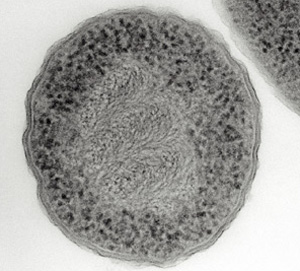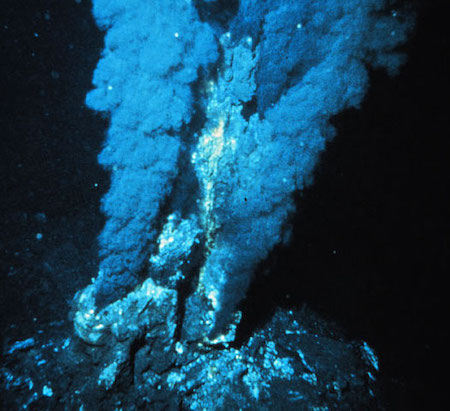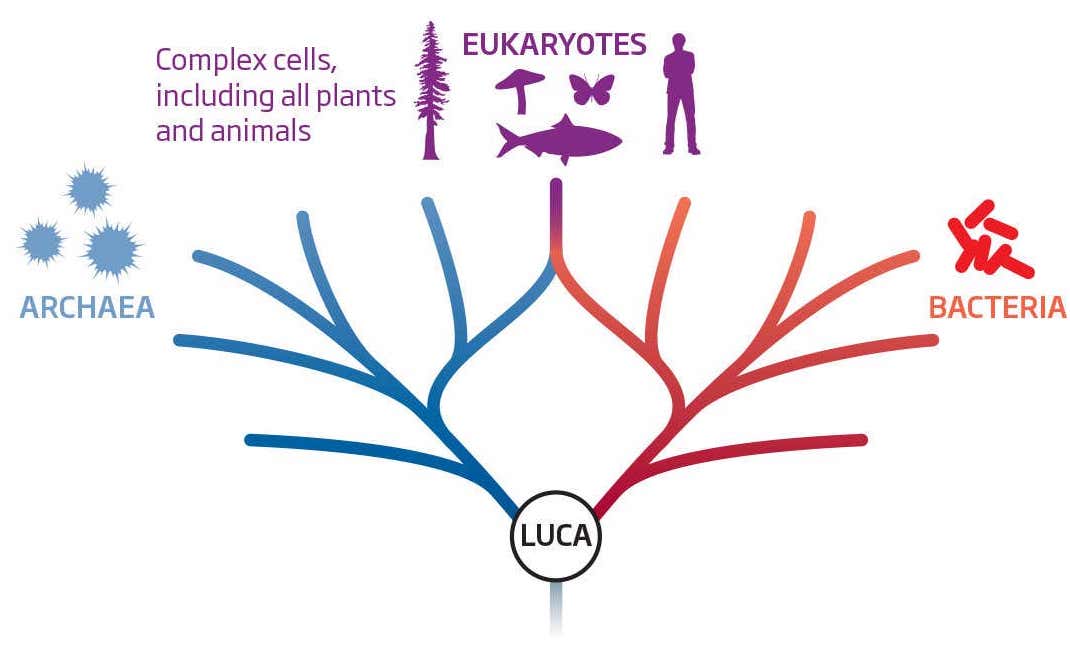 1LUCA & DNA: The Spiral of Life
1LUCA & DNA: The Spiral of Life
All living creatures have a spiral-shaped molecule called DNA, originally inherited from LUCA. The recipe for life is written in your DNA. The genome and the genetic code are also scientific names for the recipe of life. The recipe for your DNA was passed down through the generations. You inherited your DNA not only from your parents but also from all the creatures in your line of descent–all the way back to LUCA!
About 2% of the code in your DNA is identical to part of LUCA’s DNA. In fact, all living creatures share this core 2% of genetic code. This is one reason scientists believe that we are all related.

A Cell is a Body
LUCA was somebody. LUCA had a body. LUCA’s body was enveloped in its cell wall, which protected the DNA inside. LUCA was able to metabolize, that is, process nutrients by absorbing food that was filtered from the surrounding water through its cell wall. After absorbing nutrients, LUCA could filter out the waste–the leftovers that weren’t needed.
Prokaryotes: Yesterday and Today
LUCA had what is called a prokaryotic cell structure. Prokaryotic cells continue to thrive today. In fact, prokaryotic organisms vastly outnumber any other type of creature! Although these single-celled organisms had membranes, they did not have a nucleus or organelles.
LUCA’S Habitat
Scientists think LUCA most likely lived in cracks in the ocean floor similar to underwater volcanoes. This deep-sea habitat provided LUCA with an extensive supply of chemicals to fuel life. The early days on Planet Earth were extremely volatile. Meteor showers were crashing down onto the surface of the planet. LUCA evolved and survived by living deep under water.

LUCA: Life Before the Split into Plants and Animals
In the beginning, all living creatures were single-celled organisms. During LUCA’s time, there was no such thing as an animal or a plant. And there were no male or female creatures. For over a billion years all of our ancestors were simple, single cell creatures who lived in the ocean.
LUCA: Raw Ingredients
LUCA’s body, like all other living bodies, was primarily made of water. Other raw ingredients that go into creating cells are amino acids that were floating around in the water. Water and amino acids are woven together into a living cell by the amazing structure of the DNA, the double helix. Part of the secret of life is the unique way that the double helix of DNA organizes simple ingredients into complex cells.

What are Amino Acids?
Amino acids are the building blocks that make up the DNA molecule. Key ingredients include carbon, hydrogen, oxygen and nitrogen.
Reproduction: Nature’s Copying Machine
One trait that separates living from non-living things is the ability of living things to make copies of themselves.
Let’s compare the group of free-floating, non-living amino acids to the amino acids that are organized into a cell. The living cell can reproduce itself. The free-floating group cannot reproduce itself.
LUCA was able to clone itself, that is, LUCA’s body was able to split into two cells. (Show an illustration of the process)These two new cells went on to split and reproduce, and so on and so on. As a result, a lot of new cells could be generated very quickly. The new cells were exact copies of their parent cells. This process, known as cloning, is also called asexual reproduction.
For more than a billion years, all life on Earth consisted of simple prokaryotic cells, which spread throughout the ocean.
Photosynthesis
A crucial development during this time was the evolution of photosynthesis.About a half-billion years after LUCA appeared, a microbe known as cyanobacteria–a branch of LUCA’s family–evolved the ability transform sunlight into life-energy.The same technique has been handed down through the generations and is employed by most plants today.
These early photosynthesizing cells were not considered plants because they were prokaryotic. Plants, consisting of eukaryotic cells, are multicellular. We’ll learn more about this in the next step of the timeline.
What do You and LUCA have in common?

Your body–and the bodies of all living creatures–are made from these same basic ingredients (water, carbon, amino acids).
Your body is made of cells. All of your cells contain DNA.
The DNA in your body is made out of the same raw ingredients as the DNA that was in LUCA’s body.
For hundreds of millions of years the only life forms on Earth were single-celled prokaryotes. During this early phase of history, evolution moved very slowly.
What's Next?
A branch of LUCA’s family split off and evolved a more complex cell structure.
Learn More:
LUCA in The New York Times News Paper
https://www.nytimes.com/2016/07/26/science/last-universal-ancestor.html
LUCA in Smithsonian Magazine
LUCA in New Scientist Magazine
Common Descent All life is genetically related
https://www.youtube.com/watch?v=G0UGpcea8Zg
LUCA: Hydrogen & carbon dioxide, vents (1:11)
https://www.youtube.com/watch?v=mVyRWdDYCTo
